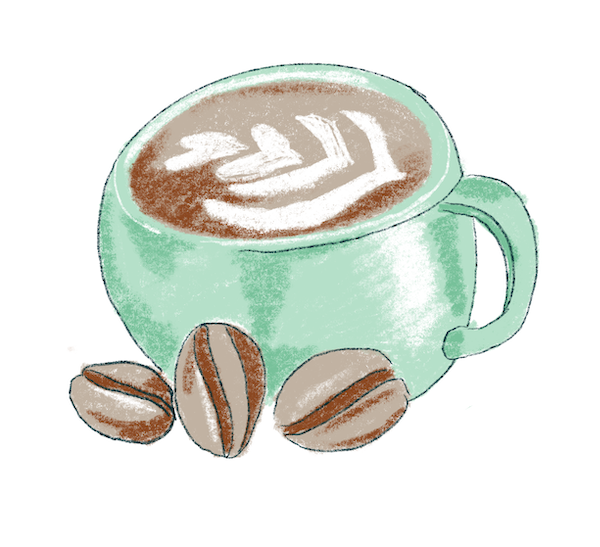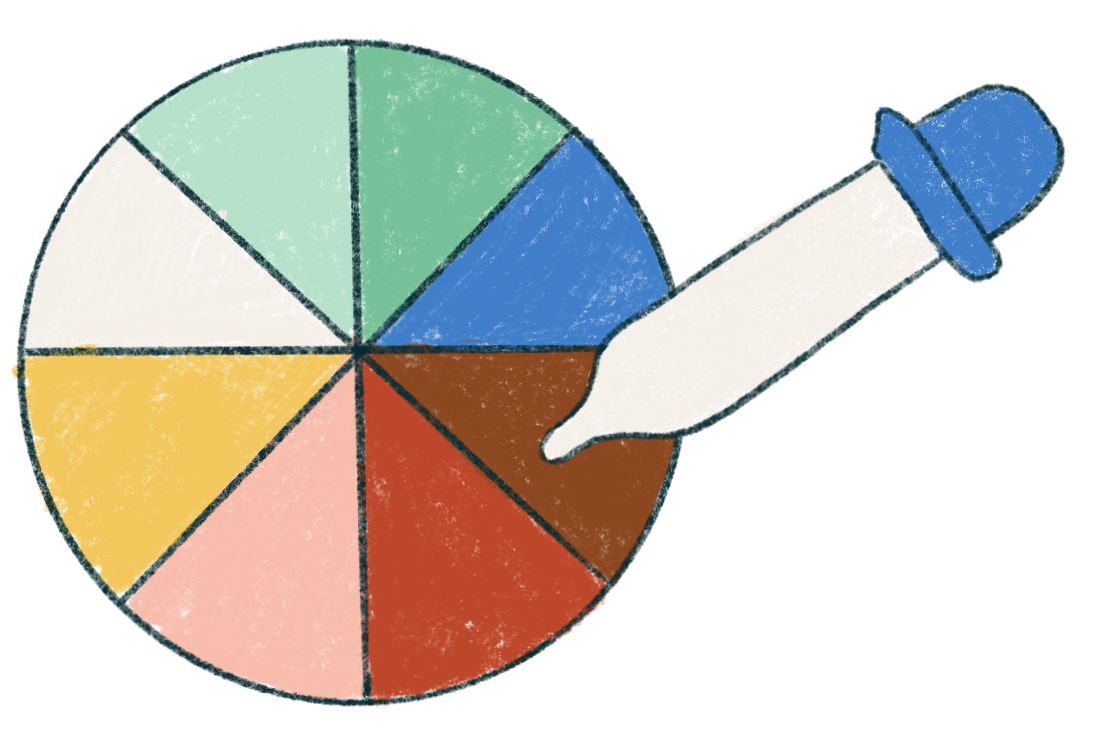Illustrations Enhance a Brand’s Story. Can They Help Your Organization?
For member-driven organizations, your brand has to tell your story and set you apart from the competition. Targeted visuals and messaging help to communicate the value of membership, and engage your audience. As you aim to connect with the next generation of members, you need to ensure that the story is consistent, unique, and memorable.
The logo, design elements, and messaging are critical building blocks of your identity. In this article, we’ll explore a potential visual component of your brand.
Populating your website or any marketing asset with predictable images or generic stock photos adds nothing to your brand’s story. Custom photography, captured to represent your brand and your members, is much more effective. But even that may only get you so far. There are many situations where you should consider illustrations to set your organization apart.
Leveraging Illustrations
One of the biggest challenges for any organization is finding a way to distinguish yourself from competitors in an overcrowded digital landscape. When strategically planned in a way that aligns with your brand, the right illustrations deliver much more than just a visual companion to your content. They add personality and character to the message your brand delivers.
Of course, illustrations are not appropriate for every organization or scenario, and you should use illustrations in a way that’s cohesive and enhances your identity. When applied correctly, illustrations offer two advantages over conventional photos:

1. Create a Distinct Visual Experience for Your Brand
Illustrations provide a way to add character to your overall brand. The personality, color, and texture they add to a marketing piece go above and beyond what a photo or design element can provide. Each illustration is a unique and custom piece of art that has been thoughtfully composed to embody the distinct characteristics of your brand and communicate the idea at hand. The possibilities are endless with illustrations and, best of all, they are completely custom to your organization, so they are highly ownable. For an organization serving doctors or other medical professionals, a suite of clean illustrations can add a note of professionalism, trust, and humanizing compassion. Or, alternatively, more expressive and loose illustrations add welcoming warmth and whimsy to a brand.
Illustrations are available through stock websites and clip art libraries, but that’s not what we’re talking about here. If you are going to make illustration a part of your brand it needs to be consistent and custom to your needs and brand characteristics. Your organization is unique — you need to establish an illustration style for your brand and work with one or more professionals to create unique illustrations.

2. Capture Complex or Abstract Ideas Specific to Your Needs
Stock images exist because they depict common scenarios organizations like yours need in their communications. But what if you need an image of a concept specific to your audience or a more abstract idea? You’re inevitably left with a generic photo that falls short of and looks indistinguishable from any other organization.
However, the right illustrator can capture the most esoteric concepts without being constrained by the limits of photography. For example, imagine you needed to depict loyalty or perhaps the idea of someone juggling multiple priorities. A custom illustration can cleverly capture these ideas without resorting to clichés or predictable images from a widely available and overused stock library.
Better still, an illustration allows your organization to own the images you use. It becomes part of your brand and adds to a distinctive style your audience won’t see elsewhere.
Are Illustrations Right for Your Organization?
Like any other design element, your organization can’t start arbitrarily incorporating illustrations to enhance your content. You have to first understand your brand to ensure the visuals you choose will make the right impression on your audience.
To gain a clear picture of your organization’s brand, consider who you are, what you’re trying to say, and who you are trying to reach. If illustration is the right format for your organization, you should assess what style is appropriate to communicate your brand’s characteristics and values.
The illustrations should retain a consistent style and fit your overall brand system. Your goal is for each visual to feel cohesive, and tailored specifically to your organization and members.
Incorporating the Right Illustration Style to Tell Your Story
Finding the right illustration style to suit your brand is ultimately a strategic decision. Style isn’t everything — but it goes a long way toward enhancing your brand. The following options are just a few approaches at your disposal:

Character-driven
If your visual presentation lacks a human element, your audience may subconsciously feel your organization is emotionally distant. Relatable depictions of characters or other figures engage your audience and open new avenues for connection.

Minimalist
A less-is-more approach transforms complex ideas into the simplest, most efficient visuals. These illustrations retain the focus on their subject with clean lines and clear images.

Big & Bold
A form of minimalism, this style uses outsized representations of shapes, forms, figures, and even letters. Applying exaggerated designs and bold, colorful lines is another way to capture your audience’s attention.

Retro
Influenced by the shapes and textures from a bygone era, throwback illustrations connect with the viewer by provoking nostalgia.

3D
Challenging the limits of two-dimensional design, 3D illustrations increase user interest by adding depth and a sense of the unexpected to environments, characters, and styles.
Cohesive Illustrations Enhance Brand Identity
Finding the right illustrator to work with your brand is an art, and you should make sure the visuals they create are flexible enough to suit your needs. When you’re working with the right agency partner, you gain access to a rolodex of illustrators and a creative professional who can translate your business needs.You don’t have to tackle it on your own. If you’re looking for a visual approach to your brand that will resonate with your members, we should talk.
Understand the Meaning of Colors in Design
The visual language of your brand is a powerful storytelling tool for illustrating key attributes of who you are as an organization. And though everyone has color preferences, you must choose color in an intentional, strategic way.
The colors you associate with your brand in your marketing collateral communicate vital details to your current and future members. Review this chart to gather more information about the meanings associated with colors, how they’re used, and more.
See Your Organization’s Event Venue in a New Way
Does your organization have an important event coming up? You need to view your venue with a critical eye that extends beyond what the event planner and facility manager can provide.
Applying a creative viewpoint that will anticipate what your members need and how the venue can best serve your organization’s goals will open new opportunities to take your event to the next level. Use this three-step guide to gain a better understanding of how to recognize opportunities through a fresh perspective on your event.
The Psychology of Color and What It Communicates to Your Members
When your organization needs to connect with new and prospective members, your brand is the most powerful resource at your disposal. A strong and cohesive brand provides more than a useful framework to streamline the development of your organization’s marketing and its collateral. It codifies the details of your organization’s story and the value it provides to a critical audience — your current and future members.
Though you need a highly flexible and specific visual language to develop a strong brand, one of its most important components is also its fastest communicator: Color.
The colors associated with your organization are much more than aesthetic preferences. They’re a strategic decision that impacts how current and future members perceive your organization. As you work to ensure your brand delivers the clearest picture of who you are, you need to consider the impact of the colors you choose and what they say to your audience.

Your Brand’s Color Choices Communicate Beyond Words
The core building blocks of your brand are derived from a long list of visual and messaging components that extend well beyond a logo and a tagline. One of these building blocks is your color palette, which can greatly influence how your members perceive your organization.
According to one recent study, color influences up to 90% of our initial impressions of the environment while impacting our behavior, mood, and stress. For example, red evokes passion, aggression, and urgency. Blue inspires feelings of reliability and tranquility.
In marketing and advertising, brands tap into these unconscious responses to demonstrate who they are. For example, healthcare and security brands frequently use blue to communicate stability and trust. Or, the food industry often uses yellow to stimulate appetite and create positive associations with the brand.

Color Enhances Organizational Identity and Improves Retention
For your organization, the right color choices draw a deeper connection with members and demonstrate your organization’s personality. Is your brand associated with innovation? Approachable and collegial? Or more professional and academic? The colors you choose underscore those values and add to your brand narrative
Plus, a unique and memorable color palette sets you apart from competitors, which adds to your presence in the marketplace. When implemented strategically, your organization’s color choices improve brand recognition while nurturing a close connection with your members. Consistently using select colors can be a strong cue for invoking loyalty and pride in your organization. If I say red, white, and blue, what do you immediately associate with that color combination? Next, think of sports fans. You’ll never see them wearing the wrong colors on game day. Color is a very powerful tool in building loyalty and defining your identity.
Color choices carry great power but they also require great responsibility. A department may be tempted to adopt new colors to energize a special project, add flair to a landing page, or provide a fresh look to an upcoming event. But you have to ensure every color you choose is consistent with your brand or risk diluting your impact and undermining the brand equity you’ve built up.
Your brand should work with a variety of colors, but your visual presentation has to remain cohesive. A consistent use of color provides another way to build trust and loyalty among your membership. With these attributes in place, your organization gains improved member retention.
Colors Impact Website Usability
Your organization may have a long history with its current color palette, but you have to ensure those choices work effectively across your digital channels. For example, colors on your website can be used to establish a visual hierarchy. A bold, contrasting color draws attention to call-to-action buttons, guiding your website users to the right next steps. A well-considered color palette enhances usability by incorporating specific colors to highlight navigation menus and other links to get around your website.
However, not every user will view your website’s color choices the same way. When used together, some colors lack contrast and violate ADA Guidelines, which can expose your organization to legal risk. When you’re working with the right agency partner, you can ensure your website offers an inclusive experience for all users.

How to Choose a Memorable, Flexible Color Palette
Your brand is too important to rely on personal tastes to inform its color choices. By collaborating with a design partner, your organization gains a robust set of options through the following steps:
- Focus on the primary palette: These central colors should reflect your brand’s personality. Choosing a recognizable primary color palette plays a crucial role in how well your brand is remembered.
- Develop a secondary palette: These colors should complement the primary colors but provide your brand with more range. Establishing the right tones, tints, and neutrals to pair with these secondary colors will further ground your brand’s overall color palette.
- Ensure your palette has a balanced tonal range: Your creatives should have enough color options to add emphasis and guide focus. At Position, we often convert palettes to grayscale to ensure a wide tonal variety.
- Consider ADA compliance: Test color pairings for appropriate contrast or optical strain. Your color choices should not compromise readability or usability.
- Strike a balance between too few and too many options: Sophisticated member-driven organizations should have a palette consisting of 12 to 16 colors, including neutrals and tones. More limited palettes are distinct and bold, but larger palettes are more flexible.
If your organization hasn’t considered the impact of its color choices, we should talk. We’ll ensure your brand has the right palette in place to serve your members and their needs.
7 Website Features That Empower Associations to Serve Members at a Higher Level
Member-driven associations like yours play a vital role in bringing together businesses, professionals, and stakeholders within your industry. A well-crafted website is not only a digital hub for your members. It’s also a powerful tool for demonstrating the value of membership. As the next generation takes over the workforce, you need to rethink your website to serve a new audience of digital natives.
We’ve found that every member-driven website thrives with the support of several core features. While the use cases for the following elements may vary depending on the size of your organization or its focus, each offers a crucial opportunity to empower members and make a positive impact on your industry.
Core Elements of Every Website Experience
Your website often gives the first impressions of your organization. Given its importance, every element of your website must look, feel, and function in a way that attracts and engages your members. For associations, that effort begins with ensuring your brand draws a strong connection between your organization and its audience.
Once your brand and messaging are aligned, every association website begins with the following foundational elements:
- A clear and compelling design: A design that’s appealing and user-friendly is essential to ensuring your site’s visitors have a positive experience.
- Intuitive navigation: A logically structured and easy-to-understand menu is necessary to ensure your site visitors can find what they need.
- Responsive and ADA accessible: A responsive design that’s optimized for all devices and accounts for the differing needs of your audience ensures your website offers an inclusive experience.
- Seamless integrations with external systems: Real-time integrations with outside data sources are essential to providing streamlined functionality that builds user trust.
- Flexible and functional CMS: Your site editors need an easy way to create, edit, and update your website.
7 Must-Have Features for Every Association Website
When your website is built on a platform that’s tailor-made for associations, you can access a suite of features to serve your current generation of members — and the next one.
With effective design and seamless integrations, your site can operate at a higher level by utilizing the following seven features.
1. Member Login and Member-only Content
Your login page should be easy to find and enable access to member-specific features with single-sign-on (SSO) capabilities that keep them logged in across your site, AMS, and any other resources.
Create a custom user experience by determining the sections of your website that should be accessible to the public as well as vital information that is exclusive to your members. By incorporating single-sign-on (SSO) capabilities between your website and your AMS, your members will be able to log in once and have access to managing their membership, signing up for events, as well as member-only content across your site based on their level of membership (member, associate, committee, board, etc.)
2. Events
Events are the heartbeat of most associations. They’re often the primary way for members to connect with each other and the organization. Every conference, seminar, and convention should be branded in a way that elevates the attendee experience and draws a positive connection to your organization. Incorporating a dynamic and easy-to-use event section into your website allows members to find and engage with these events, purchase tickets utilizing the AMS, and streamline the registration process. Plus, it builds excitement for what’s ahead.
3. Member Directory
Nurture the bond between members by offering a full directory of members. Users should be able to browse membership by whatever category suits their needs (region, role, etc.) By syncing your website member directory with your existing member database, you can ensure information about your organization’s most important audience is current and accurate.
4. Resource Library
Tap into your website’s potential as an educational resource by offering a library of articles, white papers, toolkits, webinars, and other content vital to your members and their industry. It’s critical to organize the resources by categories and implement robust filters that allow users to find what they need quickly and easily.
5. Automated Job Board
Manually managing job board submissions is both tedious and inefficient for your members and staff. A modern website enables members to submit and pay for job postings on their own. An approval process allows your staff to review and approve each posting with ease before it’s published, and the posting will automatically expire at the end of its contracted time. This process will not only empower your members to more easily and readily use this important resource, but you’re also saving your team’s time from having to manually manage all these details.
6. Testimonials and Success Stories
Your membership is a community. Strengthen those bonds by publishing stories and updates from your members that highlight the positive impact of your association. Real-life examples and testimonials inspire current members and encourage new members to join.
7. Committee and Working Group Pages
Volunteering is critical to most associations. Highlight the various groups and committees within your organization on their own pages. Your website should include details about these groups as well as their leadership and objectives to encourage member involvement. When integrated with the single-sign-on(SSO) functionality, you can give board and committee members tiered access to protected documents.
Strong Websites Are Essential to Member-Driven Organizations
Association websites are much more than digital brochures or informational archives. They’re the lifeblood of the industries they serve. Implementing these features empowers your organization to connect with its audience and deliver education and advocacy for your overall mission. If these sound like features that will enable your organization to function at a higher level, we should talk.

